本案例演示利用OpenFOAM编程实现颗粒跟踪并绘制颗粒轨迹。
1 文件结构
利用下面的命令创建文件结构。
run
foamNewApp demo16
文件结构如下图所示。
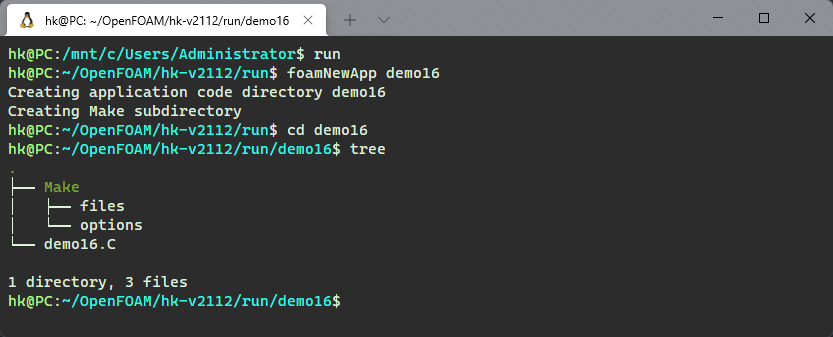
2 程序源码
本案例只需要一个源文件demo16.C,其内容如下。
#include "fvCFD.H"
/*
定义一个函数,用于写入包含由点列表定义的单条多段线的vtk文件。
有关vtk文件格式规范,请参阅:
https://vtk.org/wp-content/uploads/2015/04/file-formats.pdf
*/
void saveTrajectoryToVtk(DynamicList &path, fvMesh &mesh)
{
Info << endl
<< "将颗粒路径写入到VTK文件" << endl;
// 创建一个文件夹用于存放VTK文件
fileName VTK_dir = mesh.time().path() / "VTK";
mkDir(VTK_dir);
// 创建文件指针
autoPtr vtkFilePtr;
vtkFilePtr.reset(new OFstream(VTK_dir / "particle_path.vtk"));
// 写入文件头
vtkFilePtr() << "# vtk DataFile Version 2.0" << endl
<< "particle_path" << endl
<< "ASCII" << endl
<< "DATASET POLYDATA" << endl;
vtkFilePtr() << nl;
// 写入点头部
vtkFilePtr() << "POINTS " << path.size() << " DOUBLE" << endl;
// 写入点坐标
forAll(path, ipt)
{
vtkFilePtr() << path[ipt].x() << " " << path[ipt].y() << " " << path[ipt].z() << endl;
}
vtkFilePtr() << nl;
// 写入线的头部与列表
vtkFilePtr() << "LINES 1 " << path.size() + 1 << endl;
vtkFilePtr() << path.size() << endl;
forAll(path, ipt)
{
vtkFilePtr() << ipt << endl;
}
Info << tab << "vtk文件写入完成!" << endl;
}
// * * * * * * * * * * * * * * * * * * * * * * * * * * * * * * * * * * * * * //
int main(int argc, char *argv[])
{
#include "setRootCase.H"
#include "createTime.H"
#include "createMesh.H"
instantList times = runTime.times(); //得到所有的时间
runTime.setTime(times.last(), 0); //设置当前时刻为最后一个时间点
Info << nl << "使用的数据时刻为:" << runTime.timeName() << endl;
// 读取速度场U
Info << nl << "读取速度场" << endl;
volVectorField U(
IOobject(
"U",
runTime.timeName(),
mesh,
IOobject::MUST_READ,
IOobject::NO_WRITE),
mesh);
// 定义颗粒的初始位置,这里简单起见定义了一个固定坐标
point particle(0.01, 0.11875, 0);
//准备粒子位置列表和几个标量变量来存储其总行程时间和距离
DynamicList particlePositions;
scalar timeTaken(0);
scalar distanceTravelled(0);
// 添加初始化位置到颗粒位置列表中
particlePositions.append(particle);
// 找到无质量颗粒所在的网格,利用网格流速来确定颗粒的下一个位置
label cellID = mesh.findCell(particle);
Info << nl << "初始颗粒位于网格 " << cellID << " 中" << endl;
// 描述其他的变量
vector curPos = particle;
vector newPos(0, 0, 0);
label iterCount(1);
const label maxIters(100);
Info << nl << "开始颗粒跟踪" << endl;
while (cellID != -1)
{
vector velocity = U[cellID]; //得到网格的速度
scalar charLen = Foam::cbrt(mesh.V()[cellID]); //得到网格的特征尺寸
scalar dt = charLen / mag(velocity); //得到特征时间步长
newPos = curPos + velocity * dt; //计算得到新的颗粒位置
scalar dist = mag(newPos - curPos); //得到颗粒在当前时间步的位移
// 输出信息
Info << nl << "Lagrangian time step: " << iterCount << nl
<< tab << "current position = " << curPos << nl
<< tab << "new position = " << newPos << nl
<< tab << "local distance travelled = " << dist << nl
<< tab << "local time taken = " << dt << nl
<< tab << "currently reciding cell no. = " << cellID << endl;
// 将数据添加到列表中
distanceTravelled += dist;
timeTaken += dt;
particlePositions.append(newPos);
curPos = newPos;
iterCount++;
cellID = mesh.findCell(curPos);
if (iterCount > maxIters)
{
FatalErrorInFunction << "达到最大的跟踪时间步数!" << abort(FatalError);
}
}
if (cellID == -1) //颗粒离开计算域
{
Info << "颗粒离开计算区域!" << endl
<< "颗粒运行的总距离:" << distanceTravelled << nl
<< "颗粒停留时间:" << timeTaken << endl;
}
// 写入文件
saveTrajectoryToVtk(particlePositions, mesh);
// * * * * * * * * * * * * * * * * * * * * * * * * * * * * * * * * * * * //
Info << nl;
runTime.printExecutionTime(Info);
Info << "Endn"
<< endl;
return 0;
}
3 测试程序
本程序是一个后处理程序,在案例求解完毕后使用。
测试案例计算得到的速度场。
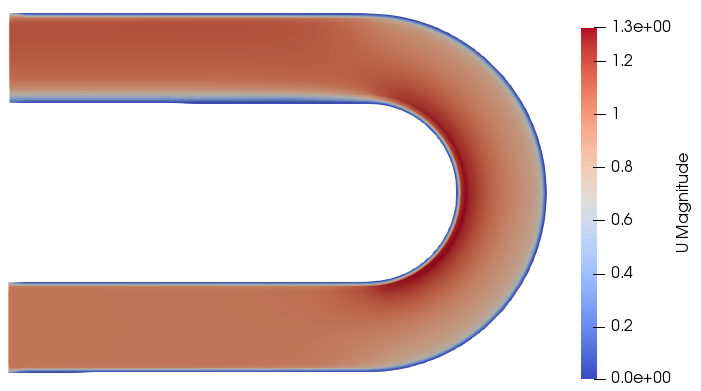
在案例根路径下执行程序demo16,结果如下图所示。
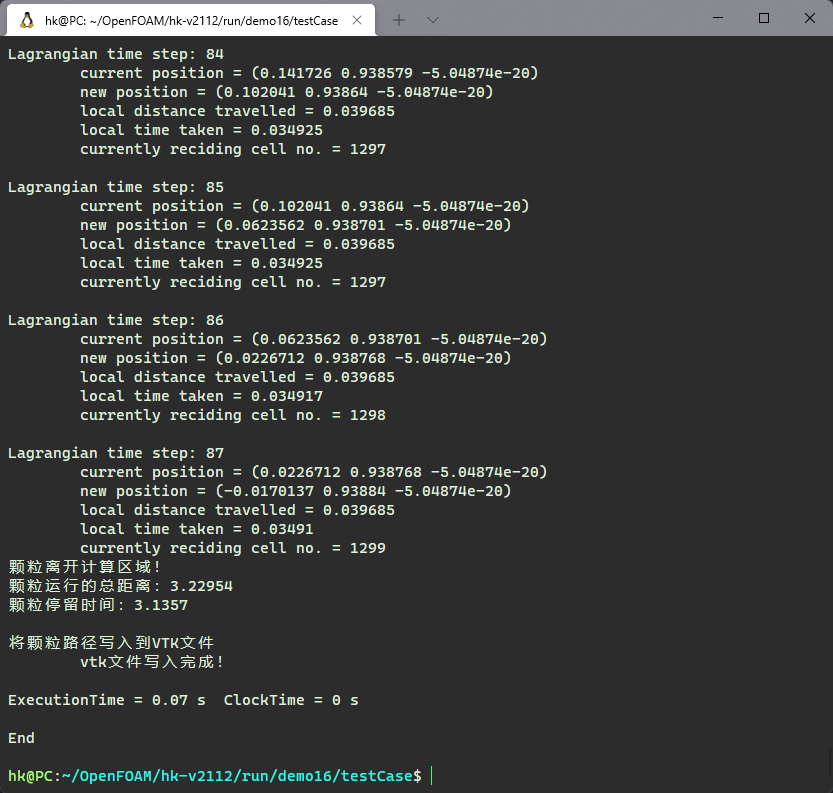
此时在根目录下创建了一个VTK文件夹,其中包含文件particle_path.vtk。
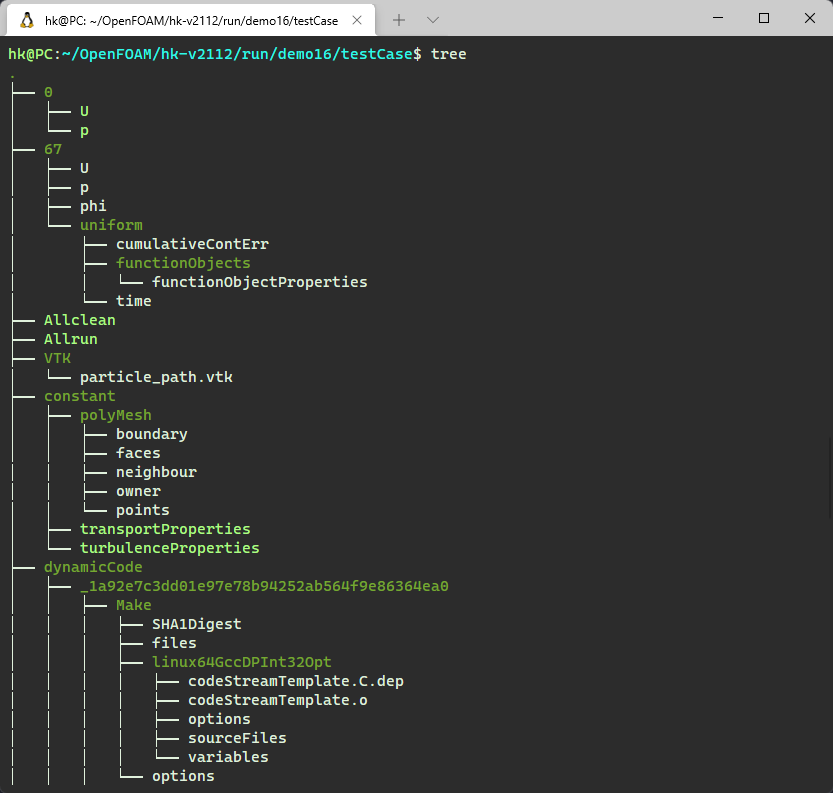
利用paraview读取vtk文件查看轨迹,如下图所示。
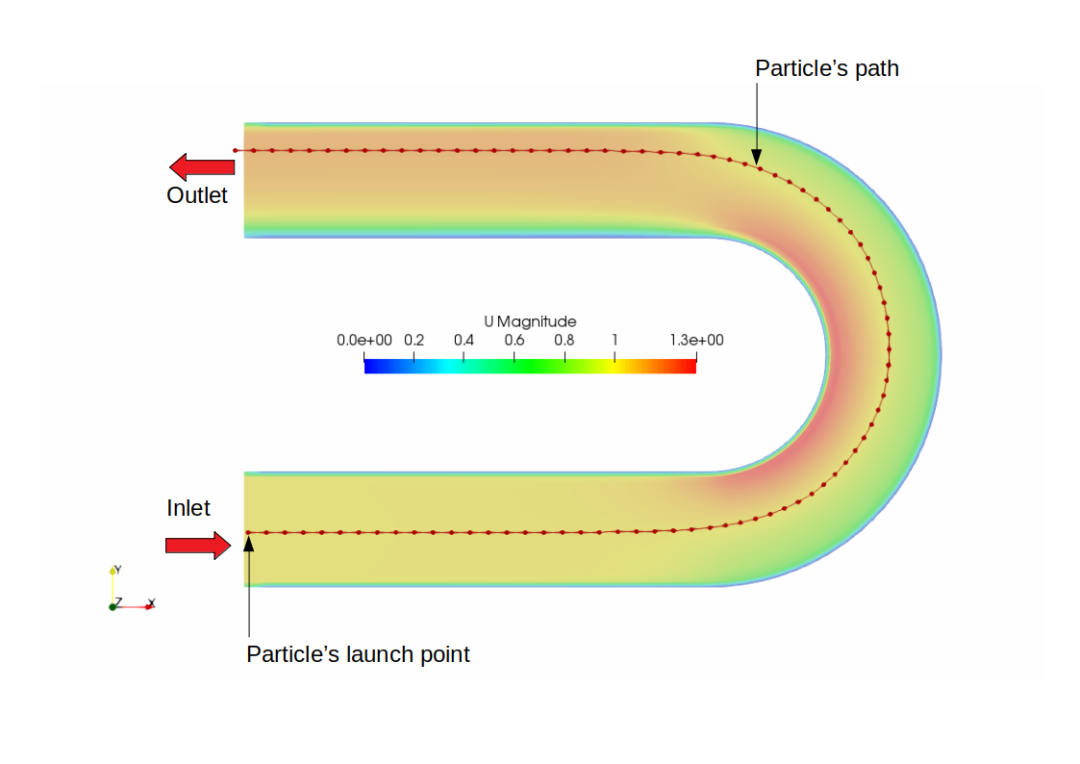
(完毕)
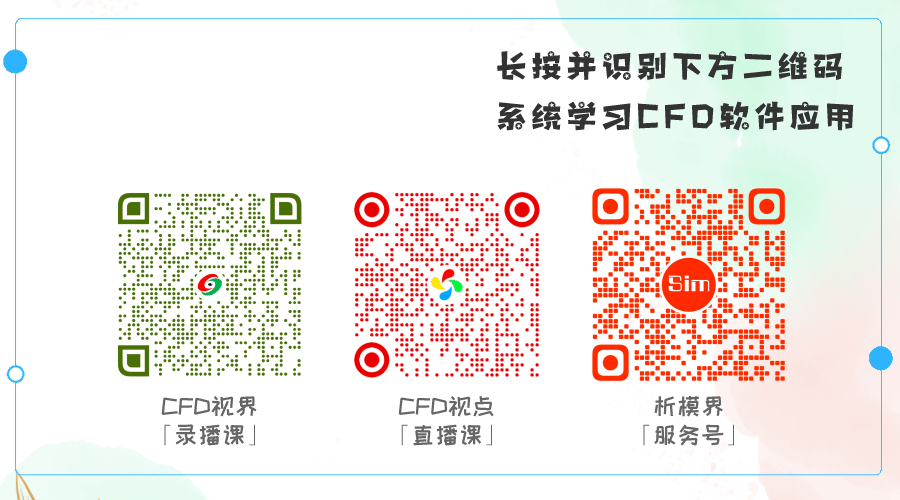
本篇文章来源于微信公众号: CFD之道








评论前必须登录!
注册